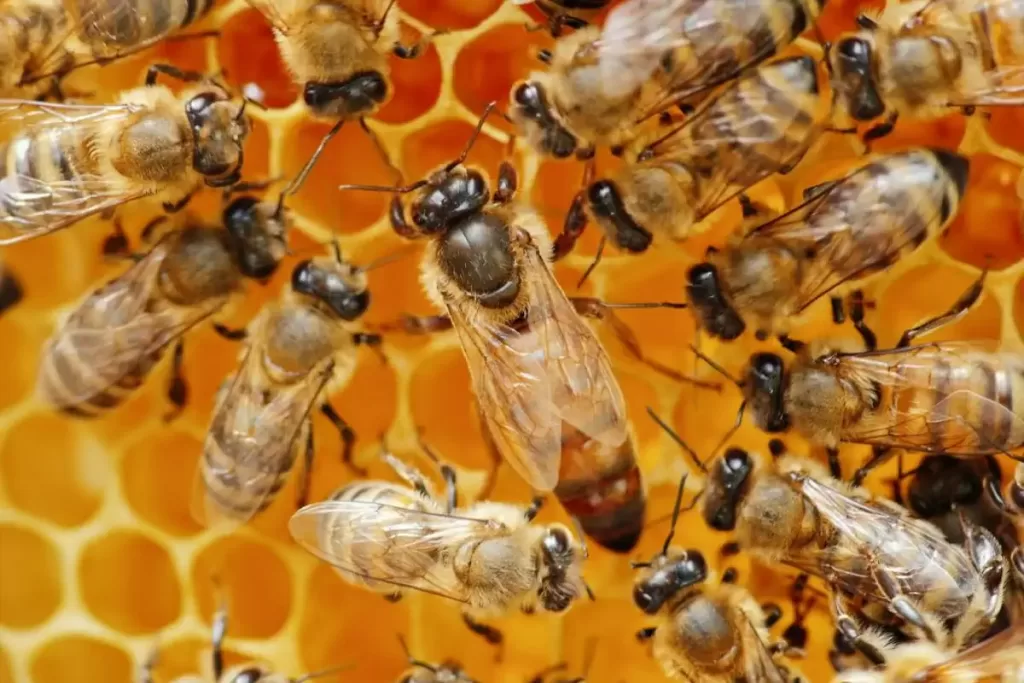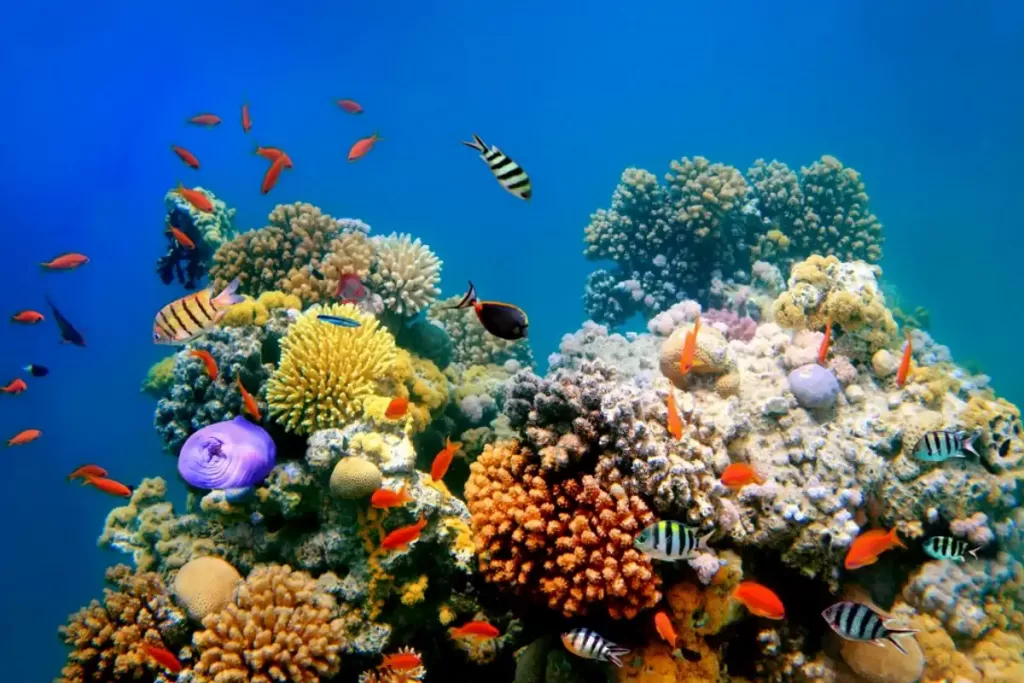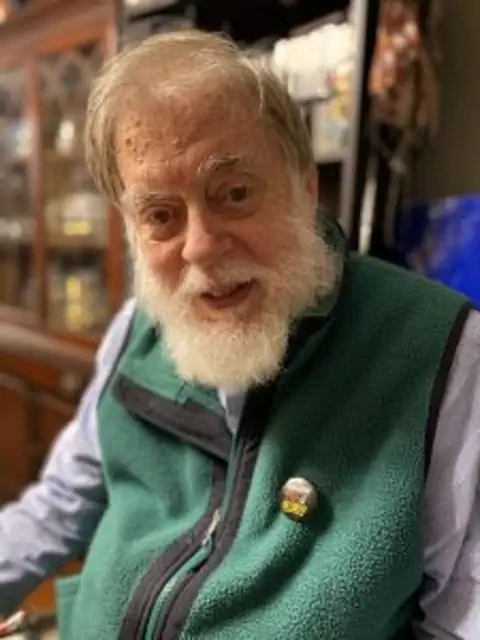Despite the old adage “nice guys finish last”, cooperation is common in life – from the scale of genes or cells through to entire societies. Although these two ideas seem to contradict each other, Dr. Egbert Giles Leigh Jr. has demonstrated throughout his career at the Smithsonian Tropical Research Institute in Panama that working together has been the key to the success of multicellular life. Here, he explains his view of how competition and cooperation both played essential roles in bringing forth productive, diverse ecosystems.
The Benefit of Cooperation
Ever since philosophers have been considering the human condition, people have wondered about the origin and persistence of cooperative behavior. If the imperative to survive and reproduce is “selfish”, why do we see so many examples of altruism and cooperation in both human and non-human societies?
The ancient Greek philosopher Plato remarked that even a gang of thieves – living by stealing from others – would need to be just, supportive, and loyal to one another, or they would all fail to survive, let alone prosper. Similarly, members of Charles Darwin’s hypothetical tribe of hunter-gatherers had to cooperate and treat each other fairly to defend themselves and their resources successfully against other tribes. It follows, he argued, that a greater proportion of courageous, loyal and cooperative members would give these tribes a distinct advantage over other tribes.
Courageous tribe members, however, die soonest, while shirkers live longer, with more time to have children – an example of how helping one’s group reduces one’s reproduction relative to other group members.
Darwin argued, however, that courage also gives one a good reputation, which attracts defenders, a larger share of food, and other benefits from fellow tribe members that enable faster reproduction before death.
Recently, Christopher Boehm found that courageous cooperation among tribe members is essential primarily for killing big game, and that communal punishment of cheaters who try to hog an excessive share of food or authority is also needed to ensure cooperation. But Darwin found the right approach to how morality evolved.
“Cooperative endeavor is as essential to the productivity and diversity of ways of life in natural ecosystems, as it is to human economies,” says Egbert Leigh. “As competition in human economies causes people to cooperate to compete better with third parties, in nature competition often selects for social cooperation among members of the same species, and ‘mutualism’ – cooperation among members of different species – to compete better with others.”
Leigh has spent decades reflecting on the role of cooperation in evolution. He suggests that competition, rather than favoring selfish behavior, can promote cooperative behaviors and lead to the complexity, harmony, and beauty we see in nature today.

Genomes: Societies of Genes
In societies, each person is an individual whose survival and prosperity depend on other members of society. In The Theory of Moral Sentiments, Adam Smith suggests that competition benefits society only when it is fair, so its members suppress unfair competition. Leigh explains that there are parallel patterns within our own genome, which can be viewed as a society of genes where natural selection acting on individual genes (the units) can give rise to fair competition among them.
“Genes are selfish, but they are interdependent: a gene only gets reproduced if the others do their jobs,” Leigh says.
Diploid parents, which have two exemplars of each gene, produce haploid eggs or sperm, which have one of each gene. For the two exemplars of each gene in the parent’s genome, a lottery determines which is chosen to enter a given egg or sperm.
If the lottery is fair, giving each gene an equal chance of being chosen, natural selection favors a gene only if it enhances the survival or reproduction of the individual carrying it. If a defective gene spreads by somehow biassing this lottery in its own favor, natural selection favors genes elsewhere in the genome that restores fairness.
Here a “moral” rule evolved without consciousness. This rule enabled natural selection to favor adapted individuals.

Related: Is Evolution “just a theory”?
Building Complex Organisms
J. B. S. Haldane and Julian Huxley remarked that evolutionary progress – from the simple life that originated in deep-sea vents through to entire ecosystems of complex and sentient multicellular organisms – has been driven by two main processes: “individuation” and “aggregation”.
Individuation is the evolution of a unit step by step under natural selection to become better adapted.
Aggregation occurs when separate units join together to form a super-unit. In a super-unit formed by aggregation of identical units, the units may differentiate in accord with the demands of a division of labor, transforming the super-unit into an individual in its own right.
Combining units of different types is another way to make super-units. Complex multicellular organisms would not exist today if not for an early instance of aggregation and cooperation. Around two billion years ago, a single-celled microbe – an “archaean” – engulfed another single-celled microbe – a bacterium. Instead of being consumed, the bacterium survived and multiplied in its host. The archaean and its bacteria provided each other with benefits they could not obtain alone.
At first, however, dying bacteria released ‘jumping genes’ that damaged their archaean’s DNA. This was thwarted through the evolution of a membrane to surround and protect the host’s genome. Therefore, “eukaryotes”, with a membrane-enclosed genome and other cell structures, evolved to tame their internal bacteria. Additionally, genetic damage by the bacteria’s jumping genes triggered the evolution of sexual reproduction. Swapping genetic material with other archaeans allowed damaged parents to produce undamaged offspring.
Over time, these bacterial helpers and their hosts became ever more interdependent. Eventually, the bacteria, unable to venture outside to another host, were passed only from hosts to their offspring. Now they had to help their hosts because they reproduced only when their hosts did. In turn, their hosts could not live without these bacteria’s efficient metabolism of energy-rich compounds, which enabled host cells to grow larger and evolve larger genomes.
The descendants of these helper bacteria are the mitochondria in our cells, now as much a part of us as our DNA. Having evolved mechanisms to incorporate and tame helper microbes, eukaryotes had less difficulty acquiring additional helpers that gave them new abilities, such as the photosynthetic bacteria that gave their hosts photosynthesis. Only eukaryotes, with their larger size and larger genomes, evolved complex multicellular organisms – plants, animals, and fungi – because only they could evolve the complex coordination among cells needed to make complex, functional multicellular organisms.
Making multicellular organisms started with forming clumps of genetically identical cells, each descended from a single, sexually produced, genetically unique ancestor. Because a clump’s cells were genetically identical, a gene benefited as much from helping a neighboring cell as its own.
Leigh remarks that because the cells of each clump were genetically identical, whereas each clump was genetically unique, selection acted on whole clumps, not individual cells. “In successful lineages, clumps evolved division of labor and means of coordination among their cells, entailing progressively more elaborate differentiation of cells into different tissues and organs,” he explains.
In animals with billions of cells, however, mutant cells may appear that “cheat” by multiplying cancerously rather than doing their jobs for the animal. Animals have evolved defenses such as specialized “policing” cells that consume such cheater cells.

Building Animal Societies
Forming animal societies also poses problems of ensuring cooperation and preventing cheating. As with other systems, mechanisms to prevent or punish non-cooperation have evolved to thwart cheaters, nudging the system back towards stable cooperation.
For example, social honeybees solve the problem of reproductive competition by only having one reproductive female – the queen. The queen’s daughters – the workers – are more closely related to the queen’s eggs than their sisters’ eggs. Workers, therefore, destroy the eggs of any other worker that tries to cheat by producing her own eggs rather than helping her queen reproduce.
Cooperation also occurs between members of different species. Mutualism can be essential for the survival of each cooperating species. Mutualism promotes increased complexity and diversity of ecosystems. Most mutualisms, however, require mechanisms that prevent “cheating” – benefiting from the fruits of cooperation without contributing to them.
“Mutualism among species is as essential to the productivity and species diversity of ecosystems as cooperative enterprise and trade are to the productivity and diversity of occupations of human economies,” Leigh explains.
For example, the spectacular coral reefs we see today exist thanks to an early mutualism between a coral and photosynthetic algae called zooxanthellae. The algae provided their host coral with photosynthesized sugars; the coral provided the algae with secure shelter and fertilizing nutrients. Mutualism is normally enforced, not by baby corals inheriting live-in zooxanthellae from a parent, but by the ability of corals to expel non-performing algae and of algae to abandon non-performing corals. Coral-algal cooperation enabled these corals to become immensely productive and to produce large, diverse reefs sheltering many other forms of life.
Ecosystems as Commonwealths
Evolutionary progress involves a trend towards cooperation that enhances productivity, diversity, and interdependence. By resisting deviations towards cheating and wastage, highly productive and diverse ecosystems endure for long periods.
Harmony in ecosystems, however, is never complete. Predators and herbivores will always be with us. Predators are essential regulators of ecosystems: for example, wolves protect the productivity and diversity of temperate-zone forests by keeping deer and boar from over-browsing, incidentally assuring these herbivores an enduring living. Even herbivory can acquire mutualistic aspects. The great grazers of east Africa protect grasslands by destroying tree saplings, which protects their future food supply by preventing forests from replacing the grassland.
However, because ecological communities are organized by natural selection over many millennia, any form of unprecedented major disturbance can abruptly diminish their productivity and diversity. Major extinctions punctuate the history of life on Earth. Diversity and productivity recover in a few million years after the crisis passes, exemplifying the normal tendency of Earth’s ecosystems to increase in productivity and diversity. Ecosystems that arise from the surviving organisms, however, may differ greatly from those that existed before the disturbance.
One of the best-known mass extinctions occurred when an asteroid struck the earth approximately 66 million years ago, killing off the non-avian dinosaurs. Millions of years later, the recovered ecosystems were as – or more – productive and diverse as pre-extinction ecosystems. However, the dinosaurs that roamed the Earth are gone forever.
Human disturbance can also be disastrous. Thanks to interdependence among species, the impacts of unprecedented disturbance on ecosystems could be far greater than expected. For example, as Leigh explains: “Eliminating sea otters allowed sea urchins to destroy productive kelp beds, replacing them by appropriately named urchin barrens which supported much lower diversity.” Here, an entire ecosystem was degraded by eliminating one species.
Although evolutionary history suggests that life will recover from humans’ destructive activities, human beings might not be among the survivors. Past extinctions are stark warnings that the planet’s interdependent ecosystems are fragile – and utterly irreplaceable.

Coda
How natural selection favors cooperation helps us understand how natural selection could favor the evolution of the beauty, diversity, and overflow of life we see in nature.
As Darwin remarked at the close of The Origin of Species, “Thus, from the war of nature, from famine and death, the most exalted object we are capable of conceiving, namely the production of the higher animals, directly follows. There is grandeur in this view of life, with its several powers, having been originally breathed into a few forms or into one; and that, whilst this planet has been cycling on according to the fixed law of gravity, from so simple a beginning endless forms most beautiful and most wonderful have been, and are being, evolved.”
Meet the researcher: Dr. Egbert Giles Leigh, Jr.

Dr. Egbert Giles Leigh Jr was a Biologist at the Smithsonian Tropical Research Institute in Panama, where he resided for almost 50 years.
He has since retired and is now an independent researcher in Baltimore. After completing an undergraduate degree in Mathematics at Princeton University, Dr. Leigh earned his Ph.D. in Biology at Yale University.
Beginning his academic career as an assistant professor at Princeton University, he was soon invited to join the Smithsonian Tropical Research Institute as a researcher. Dr. Leigh’s main research interests include evolutionary biology and community ecology; his work on tropical forest ecosystems is well-known and internationally celebrated.
Over the course of his career, Dr. Leigh has published around 200 research articles and several books, including 2019’s Nature Strange and Beautiful: How Living Beings Evolved and Made the Earth a Home, which Yale University Press describes as “A beautifully written exploration of how cooperation shaped life on earth, from its single-celled beginnings to complex human societies.”
Profile
- Profile: Egbert Leigh on the Smithsonian Tropical Research Institute website
Further Reading
- E. G. Leigh Jr., C Ziegler, Nature Strange and Beautiful: How Living Beings Evolved and Made the Earth a Home, Yale University Press, 2019.
- EG Leigh Jr, Cooperation, Evolution of, In Reference Module in Life Sciences, Elsevier, 2017. DOI: 10.1016/B978-0-12-809633-8.02340-2
- J. A. Estes, Serendipity: An Ecologist’s Quest to Understand Nature, University of California Press, 2016.
- Nick Lane, The Vital Question: Energy, Evolution, and the Origins of Complex Life, WW Norton, 2015.
- E. G. Leigh Jr., The evolution of mutualism, Journal of evolutionary biology, 2010, 23, 2507. DOI: 10.1111/j.1420-9101.2010.02114.x
- E. G. Leigh Jr., The group selection controversy, Journal of evolutionary biology, 2010, 23, 6. DOI: 10.1111/j.1420-9101.2009.01876.x
- E. G. Leigh Jr., Genes, bees and ecosystems: the evolution of a common interest among individuals, Trends in Ecology & Evolution, 1991, 6, 257. DOI: 10.1016/0169-5347(91)90073-7
- E. G. Leigh Jr. Jr, When does the good of the group override the advantage of the individual?, Proceedings of the National Academy of Sciences, 1983, 80, 2985. DOI: 10.1073/pnas.80.10.2985
Source
This article originally appeared in Scientia, with the title of “Dr. Egbert Giles Leigh, Jr. – How Ecosystems are Built: Competition and Cooperation in Evolution”.
- An Innovative Medium-Voltage DC Circuit Breaker for Renewable Power Grids - October 13, 2022
- Scientists are Mapping the Earth’s Magnetosphere with Energetic Atoms - September 30, 2022
- Scientists are Developing Recyclable and Self-healing Plastics - August 9, 2022
